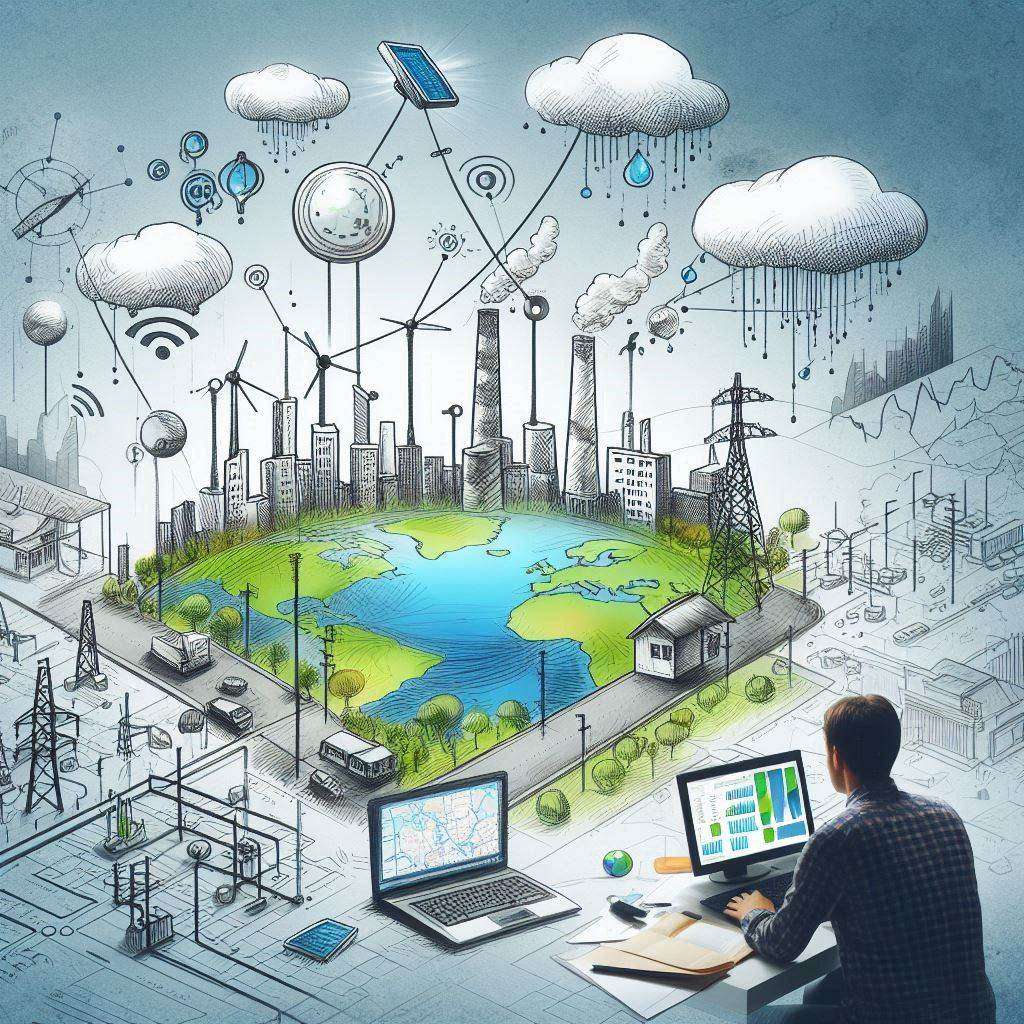Modern Challenges and Opportunities of GIS in the Environment
Geographic Information Systems (GIS) have long become an essential tool for managing, researching, and monitoring the environment. Climate change, pollution, resource management, and environmental monitoring are just a few global challenges that require effective solutions. In this article, we will explore how GIS helps address these challenges and what opportunities it opens for preserving and supporting environmental sustainability.
If you need professional GIS services for environmental monitoring, follow this link for more details http://gis-point.com.
Current Environmental Challenges
Climate Change and Global Warming
One of the biggest challenges today is climate change, which affects all aspects of life on Earth. Melting glaciers, rising sea levels, and extreme weather events are just some of the changes that require accurate monitoring and forecasting.
GIS helps not only collect and analyze vast amounts of data on climate change but also create models to predict its impact on specific regions. With GIS, it’s possible to generate forecasts based on spatial data and take preventive measures.
Air and Water Pollution
Environmental pollution is another growing issue due to increasing urbanization and industrialization. Air, water, and soil pollution lead to numerous health issues and even the destruction of ecosystems. GIS allows the tracking of high pollution areas and the analysis of their changes over time.
With data gathered through GIS, governments and organizations can respond faster to environmental issues and develop strategies for cleaning up and reducing harmful emissions.
How Does GIS Help in Environmental Monitoring?
Data Collection and Analysis
GIS allows the collection of vast volumes of spatial data from various sources, such as satellites, drones, and ground sensors. This data can include temperature, humidity, air and water quality, land movement, and more. After data collection, GIS uses special algorithms to process it, allowing the creation of accurate models and forecasts.
Map Creation
One of GIS’s primary functions is creating maps that visualize environmental data. These could be maps of air or water pollution levels, natural disaster areas, or volcanic eruptions. These maps make it easier to see the scale of a problem and quickly respond to changes.
Modeling the Impact of Human Activity
GIS also allows the assessment of the impact of human activities on nature. For example, GIS can model how urban expansion or industrial development will affect local ecosystems, water resources, or agricultural lands. This helps make informed decisions that minimize environmental damage.
Opportunities for GIS in Sustainable Development
Sustainable Management of Natural Resources
GIS opens up vast opportunities for the efficient management of natural resources. The system helps monitor the use of water, forests, land, and other resources, promoting their rational use. For example, GIS can track the condition of forests, predict their degradation, or identify areas for restoration.
Risk Assessment for Natural Disasters
Natural disasters like earthquakes, floods, and hurricanes are becoming more frequent due to climate change. GIS helps predict risks and assess the potential consequences of such events. This enables not only planning for evacuation but also developing strategies to minimize damage and enhance disaster resilience.
Urban Planning with Environmental Considerations
GIS allows spatial data to be combined with environmental indicators, which is especially important in urban planning. Taking environmental constraints into account when planning cities, zoning areas, and building new facilities helps minimize environmental harm.
Using GIS to Combat Climate Change
Climate change is a global issue that can no longer be ignored. GIS allows for more precise predictions of climate change impacts at the regional level and helps develop mitigation measures. For example, GIS can model sea-level rise and assess the risk of coastal city flooding.
Technological Innovations in GIS for Environmental Use
Integration with Artificial Intelligence
With each passing year, GIS becomes more automated due to the integration of artificial intelligence (AI). AI allows for the analysis of large datasets and makes predictions with greater accuracy. For instance, machine learning algorithms can automatically detect areas with elevated pollution risks.
Use of Drones and Satellite Data
One of the most exciting trends in GIS development is the use of drones and satellites for data collection. This allows real-time detailed data collection from hard-to-reach or dangerous areas. For example, drones can be used to survey wildfire zones or assess the scale of pollution after industrial accidents.
Challenges for GIS in Environmental Monitoring
The Volume of Data
One of the main problems is the enormous volume of data constantly being fed into the system. Processing and storing this data requires vast resources and powerful infrastructure. Each year, the amount of environmental data increases, necessitating new technological solutions for processing it.
Lack of Integration Between Data Sources
Another challenge is the lack of integration between different data sources. For instance, information gathered by government agencies may not align with data standards used by private companies or research institutions. This complicates analysis and decision-making.
Technical Limitations and Cost
Despite all the advantages, GIS technologies can be expensive, particularly for small organizations or countries with limited resources. Developing GIS requires substantial investment in software, hardware, and personnel training.
Geographic Information Systems have immense potential for environmental monitoring and conservation. They help collect, analyze, and visualize data, enabling decision-makers to develop effective solutions to today’s most pressing environmental challenges.
If you're interested in learning how GIS is used in planning and implementing construction projects, follow this link to explore more about this exciting topic https://free-5449652.webadorsite.com/.







